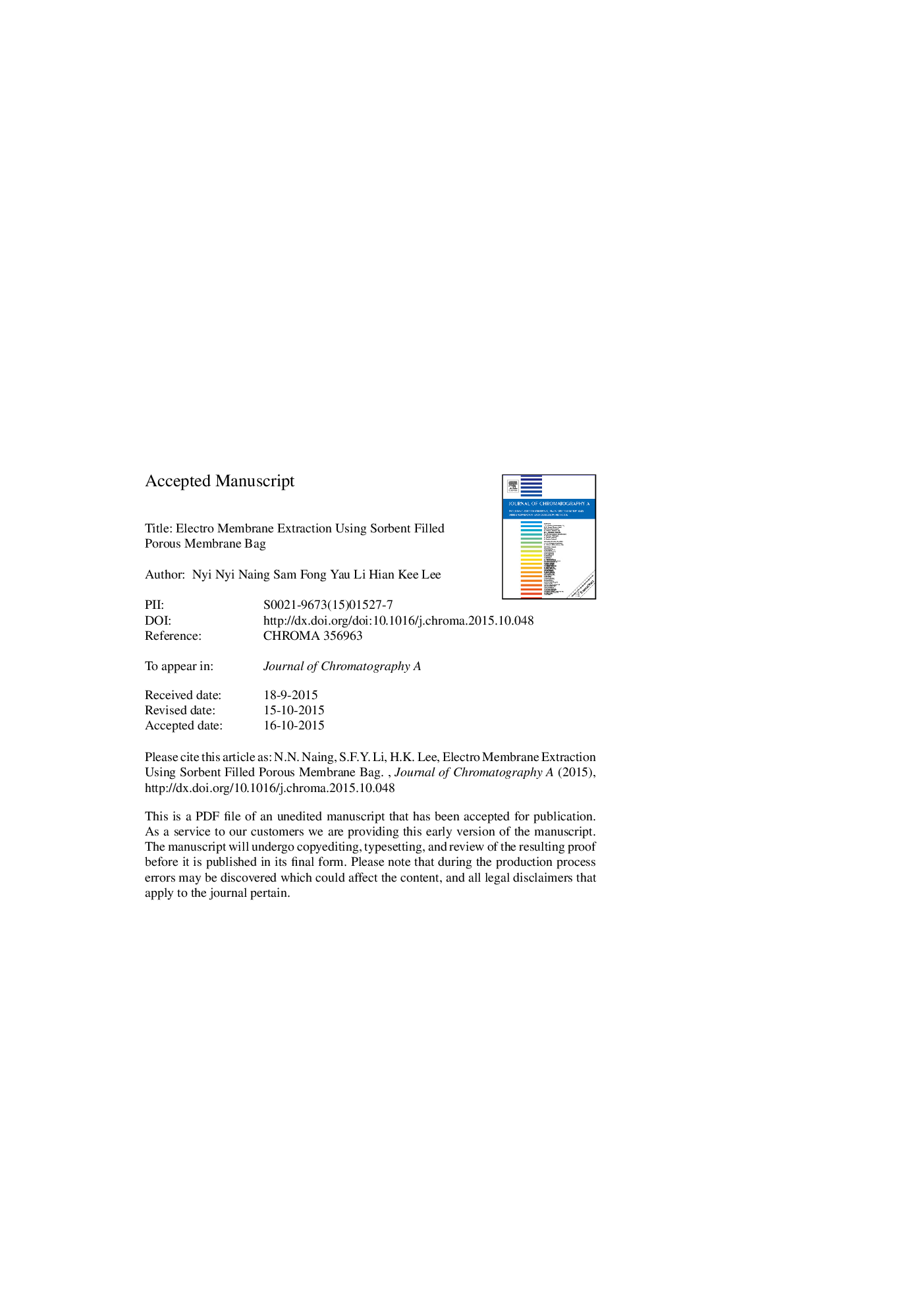| Article ID | Journal | Published Year | Pages | File Type |
|---|---|---|---|---|
| 7610946 | Journal of Chromatography A | 2015 | 38 Pages |
Abstract
Electro membrane extraction-solid-liquid phase microextraction (EME-SLPME) was developed for the first time to determine phenolic contaminants in water. The extraction system consisted of a solid/liquid interface that permitted a three-phase microextraction approach involving an aqueous sample (donor phase): an organic solvent-sorbent within a membrane bag, and an organic solvent (extractant phase), operated in a direct immersion sampling system. The sorbent, reduced graphene oxide/polyvinyl alcohol, synthesized using graphene oxide and polyvinyl alcohol by dispersing the graphene oxide in polyvinyl alcohol and chemically reducing it in aqueous solution. The prepared sorbent was dispersed in 1-octanol and the solution was immobilized by sonication in the membrane bag wall pores which was in contact with the aqueous donor solution and organic extractant solvent (1-octanol) in the main bag itself. The analytes were transported by application of an electrical potential difference of 100 V across the sorbent/solvent phase from the aqueous sample into the organic extractant phase in the membrane bag. After extraction and derivatization, gas chromatography-mass spectrometry was used to determine the derivatized analytes. This proposed EME-LSPME procedure provided high extraction efficiency with relative recoveries up to 99.6%. A linearity range of between 0.05 and 100 μg Lâ1 with corresponding coefficients of determination (r2) of between 0.987 and 0.996 were obtained. The limits of detection were in the range of between 0.003 and 0.053 μg Lâ1. This proposed method was successfully applied to the extraction of phenolic contaminants from water sample.
Related Topics
Physical Sciences and Engineering
Chemistry
Analytical Chemistry
Authors
Nyi Nyi Naing, Sam Fong Yau Li, Hian Kee Lee,
